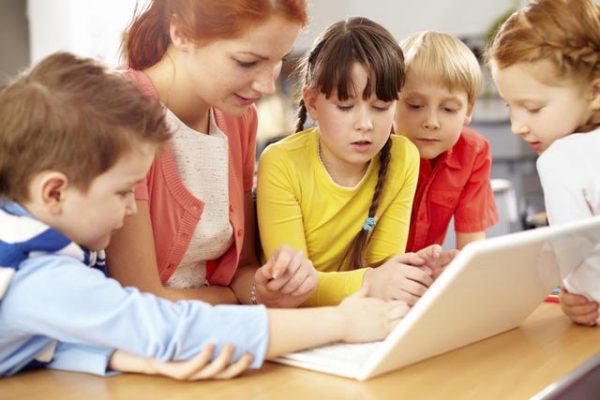Thirty states offered full-time, online options for kids in the K-12 school system, according to a February 2012 PBS special report.
Cyber schools enable students to take classes on home computers or at computer classrooms. While this educational format is readily available, educators have long argued about its merits relative to conventional public school classes with a teacher in front of a classroom.
Classroom
In a traditional public school, 15 to 30 students sit in classroom desks or tables and receive instruction from a teacher. Each class has its own distinct teacher. In a cyber school, students learn and complete coursework using advanced laptop or desktop computers and Internet connections. While setups differ, online schools often allow hundreds of students in different school districts to take a single subject or class from the same cyber school-certified instructor.
Social Interaction
A strength of traditional public as schools is a greater opportunity for social interaction with peers and faculty. Students have informal access to peers before school, between classes and after school. Cyber students typically don’t get as much social interaction in the regular class setup, although some instructors integrate online discussions or chats. Additionally, some cyber school programs provide students with field trip experiences where they can meet other online students. Often, cyber students leave the traditional school setting because of social anxieties or bullying.
Technology
Cyber school students often receive in-depth experience with computers and technology. They have to learn to use computers effectively to get instruction, research for school projects and submit assignments. Though some schools have severe budget restrictions, traditional schools have incorporated more technology. Classroom instructors have computers for use in presenting Power Points or streaming videos. Students get some computer training through computer courses and some in preparing research in the library for projects or assignments.
Peer Pressure
A major motive for students to leave the public school setting and start cyber classes is peer pressure. Whether a student has actually been bullied or is simply too uncomfortable in classes to participate, online education can alleviate those social barriers. In fact, some students more actively engage teachers and peers in cyber formats. In traditional schools, students usually do experience peer pressure in subtle and direct ways. However, some students have limited challenges or are better equipped to handle peer pressure, which can benefit them in future work settings.

